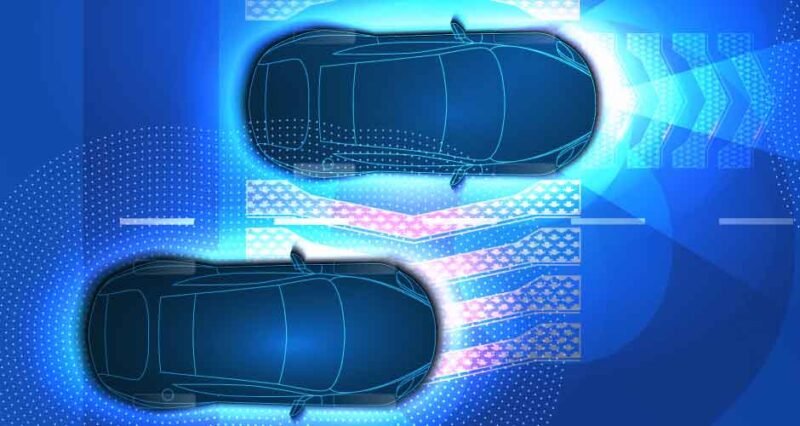
For many years, the idea of cars that can think on their own seemed like something out of a sci-fi movie. But now, thanks to the coming together of the Internet of Things (IoT) and car tech, that dream is slowly becoming real. By putting a network of sensors, communication systems, and smart analytics into our vehicles, IoT is changing how we drive, making it safer in ways we never thought possible.
In the past, car safety mainly focused on things like airbags, crumple zones, and advanced seatbelts – things that react after a crash has happened. IoT takes a different approach, making cars like “smart assistants” that can predict and stop accidents before they happen. This change relies on three main things: Enhanced Driver Assistance Systems (ADAS), Vehicle-to-Everything (V2X) communication, and predictive maintenance.
ADAS: Your Smart Co-Pilot on the Road
ADAS systems, using a bunch of onboard sensors and real-time data analysis, are always keeping an eye on us while we drive. Picture this: you’re on a highway, and your car gently guides the steering wheel back when you start to drift out of your lane. Or, as you approach a crossroads, the car automatically brakes because it sees a pedestrian in the crosswalk. These are examples of how ADAS, powered by IoT, can stop mistakes and save lives.
V2X: Power of Shared Awareness
Now, what if cars could talk to each other, sharing important info about what’s around them and what they’re planning to do? That’s the idea behind V2X technology. Imagine driving in fog, not seeing what’s ahead. Suddenly, a warning pops up on your dashboard, telling you about a car stopped just around the bend – info sent directly from that car. With V2X, cars can work together to predict dangers and react together, creating a safety net for the whole transportation system.
Predictive Maintenance: Keeping Your Car in Top Shape
Beyond preventing accidents, IoT also helps keep cars in top shape, reducing the chance of breakdowns or mechanical issues that could lead to problems. Predictive maintenance systems, using sensors and smart algorithms, keep an eye on a car’s vital signs – like tire pressure, engine performance, and brake wear – in real-time. These systems can predict possible issues before they become big problems, letting us deal with them early and making sure our cars stay dependable and safe on the road.
Connected Cities Paving the Way for a Safer Future
The impact of IoT on vehicle safety extends beyond individual cars. Smart infrastructure, equipped with interconnected sensors and traffic management systems, can collect real-time data on congestion, road closures, and weather conditions. This data is then shared with connected vehicles, optimizing traffic flow and preventing accidents caused by traffic jams and unexpected hazards. Imagine driving into a city during rush hour, and your car smoothly navigates through detours, suggesting alternate routes based on current traffic data, helping you reach your destination faster and safer.
However, with the significant benefits of IoT comes the responsibility to address concerns about privacy and security due to the vast amount of data generated by connected vehicles. It may be important to implement strong data protection measures and ethical guidelines is essential to ensure that the positive impacts of IoT are not overshadowed by unintended consequences. Collaborative efforts among technology developers, policymakers, and consumers are crucial to harness the power of IoT for smarter, safer, and more responsible driving.
The journey towards a future where accidents are rare is still ongoing. In our current reality, driver mistakes remain a prominent cause of crashes according to the Ontario car accident lawyer at RKM. But with each new sensor, every V2X connection, and every refined algorithm, IoT is creating a safety net around our vehicles, bringing us closer to a world where driving is not only a necessity but also a genuinely safe and enjoyable experience for everyone.

